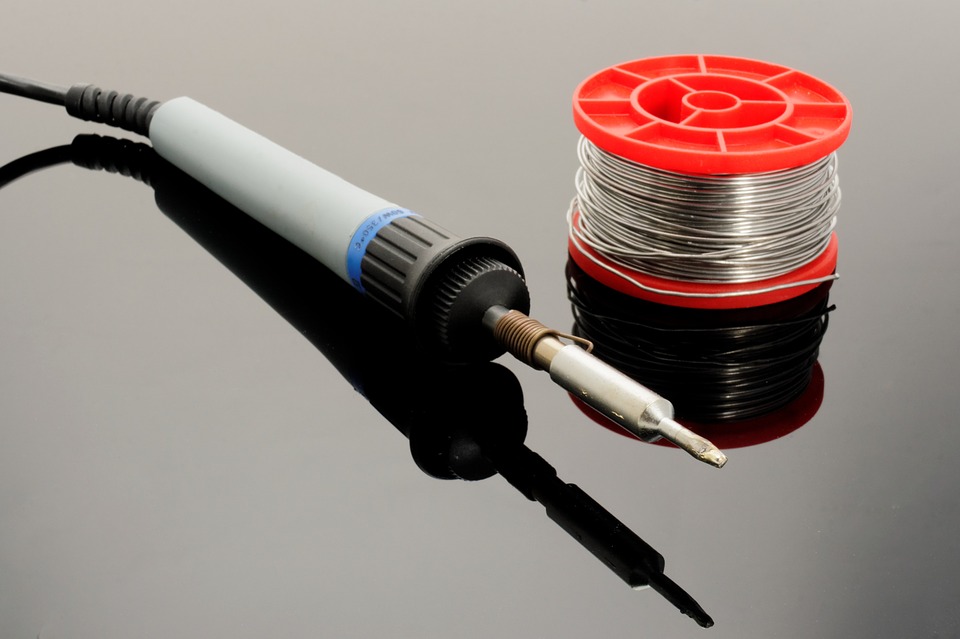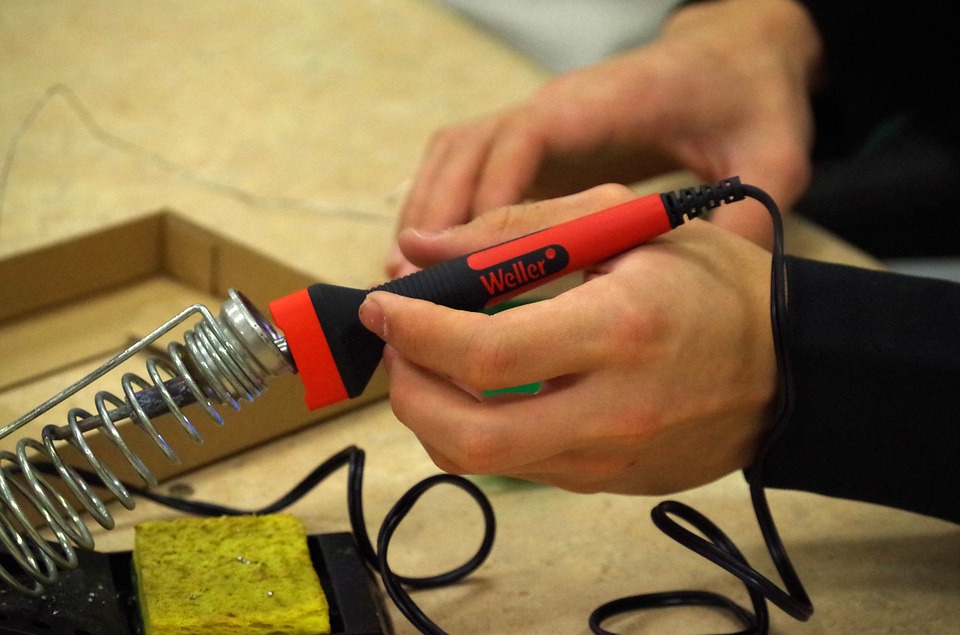A soldering iron takes skill to wield, but if you know what you’re doing, you can become an expert with this tool. Several industries use soldering irons as a part of the manufacturing process. If you’re a supervisor with employees who solder as part of their job, teach them these tips to get the most from their ironing abilities.

Soldering is used to connect pieces of small metal. Whereas construction typically uses welding for large pieces, electronics manufacturing uses soldering to piece together smaller parts. The process uses solder that an iron melts and applies to a circuit board. Soldering allows for the flow of electrons through the connection. Since it does not disrupt electricity, it’s ideal for circuit boards and other electronics.
Solder has a low melting point compared to other alloys, but it still reaches 400 degrees Celsius, or 752 degrees Fahrenheit. Usually, you’ll find solder in reels that resemble fishing lines. Some products include a built-in material in the solder that makes it adhere better to the right surfaces. If you want this choice, look for solder with a flux-core.
Protect yourself from the excessive heat produced by the soldering iron. The solder itself can fly off, so always wear eye protection and long sleeves. The last thing you want is to have molten solder in your eye or on your skin.
Avoid rosin-containing flux in solder if possible. It can create fumes that pose lung and eye irritation. If you use rosin flux, always wear protective gear for your mouth, eyes and skin.
The soldering tool stand protects the iron from damage. It also prevents the hot tip of the tool from interacting with flammables nearby. When you need to put the soldering tool down, always put it back in the stand. Doing so will keep your area clean and prevent damage to the tip. It also keeps the hot tool away from cables and plastics that it could melt.
Beginners often want to use too much pressure when applying the solder. Avoid this mistake, because it can cause too much solder to pour out. It can also damage the tip of the iron. You can’t save time by pressing harder. In fact, you may waste time by needing to replace the tip on your tool.

The tips of your soldering iron are incredibly delicate. When removing one, never use anything other than the tip extractor tool. Don’t use pliers or other alternatives, as these tools can cause damage. Tin your tips to lengthen their life and remove oxidation. With a tinned tip, the solder becomes easier to apply due to improved heat transfer. Tinning also prevents oxidation, which can ruin the tip.
Most tips need a wipe with a clean, damp sponge, but never use tap water for the sponge. Always use distilled water, and never make the sponge soaking wet. It should just be damp.
For other cleaning methods, follow the manufacturer instructions carefully. Keep cleaning supplies nearby when you’re working, as you’ll be more likely to remember to clean the tips after use if the cleaning supplies are within reach.
Some solders work better than others. Water-soluble flux can oxidize tips. Using solder with a core of water-soluble flux can corrode parts when used at high temperatures. Specific situations that need the smallest amount of cleaning use no-clean solders, but when used regularly, this type of solder can lead to burned out tips. If you must use this solution or water-soluble flux, thoroughly clean your tips, and be ready to replace or retin them if oxidation occurs.
The correct temperatures are vital to adhering the solder without causing damage. Excessive temperatures can cause corrosion on the circuit board. Always refer to the specs with the solder and use the lowest possible heat. Lower temperatures will make it safer for you to wield a soldering iron, and such a condition protects your project from damage.
Learning soldering tips is just the beginning. You’ll need regular practice to get a feel for the process. Develop good cleaning and care habits for your tips to protect them. These habits will reduce your effort over time, as you’ll always have clean tips ready to use. With some practice and care, you can become a top solder wielder who can work with any material.
 Megan Ray Nichols
Megan Ray Nichols
Freelance Science Writer
Megan Ray Nichols is a STEM writer and the editor of Schooled By Science. She regularly writes for IMPO Magazine and American Machinist. For more from Megan, follow her on Twitter, @nicholsrmegan, or subscribe to her blog.
In this episode, I sat down with Beejan Giga, Director | Partner and Caleb Emerson, Senior Results Manager at Carpedia International. We discussed the insights behind their recent Industry Today article, “Thinking Three Moves Ahead” and together we explored how manufacturers can plan more strategically, align with their suppliers, and build the operational discipline needed to support intentional, sustainable growth. It was a conversation packed with practical perspectives on navigating a fast-changing industry landscape.